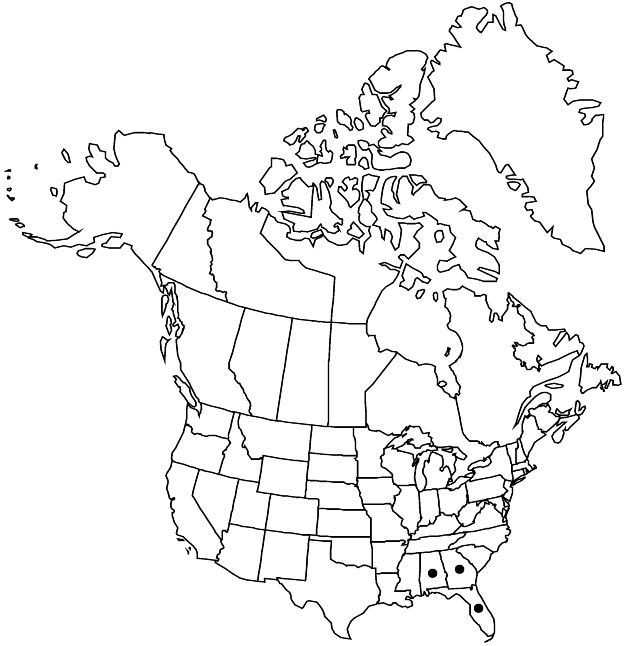Linum harperi
Fl. S.E. U.S. 663, 1332. 1903.
Herbs, annual, 25–85 cm, glabrous. Stems erect to ascending, unbranched proximally, few to many branched distal to middle. Leaves: proximal 0–13 pairs opposite (often fallen at anthesis), distal alternate, appressed-ascending; stipular glands usually present, very rarely absent; blade of proximal leaves oblanceolate or spatulate, of distal ones linear, 7–30 × 1–3 mm, margins entire, not ciliate, apex acute to subulate; midrib prominent, marginal nerves less conspicuous. Inflorescences racemelike; bracts glandular-toothed, not ciliate. Pedicels 1.3–4.7 mm. Flowers: sepals persistent, outer sepals oblong, 2.3–3.7 mm, margins not scarious, all very coarsely, irregularly glandular-toothed (inner sepals more closely and finely toothed than outer), apex acute; petals pale yellow, obovate, 5–10 mm; stamen length unknown; anthers 0.3–0.7 mm; staminodia absent; styles connate 0.2–1.8 mm at base, 2–4.5 mm; stigmas capitate. Capsules ovoid, 2.5–3.3 × 2.1–3 mm, apex rounded to acute, dehiscing freely into 10, sharp-pointed, 1-seeded segments, segments persistent on plant, false septa incomplete, margins prominently ciliate. Seeds 1.6–2.1 × 0.8–1.1 mm. 2n = 30.
Phenology: Flowering Jul–Aug.
Habitat: Dry pine barrens, clearings in pine flatwoods, calcareous soils or limestone outcrops.
Elevation: 0–100 m.
Distribution

Ala., Fla., Ga.
Discussion
Dried plants of Linum harperi are dark purple-dotted distally. The species occurs in the center of the Florida panhandle, southwestern Georgia, and central Alabama.
Selected References
None.